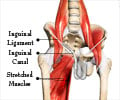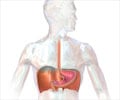Laparoscopic Surgery
Steps of Surgery
This procedure is performed under General Anesthesia.
- After administering anesthesia the abdomen and groin are prepared with an antibacterial solution.
- The abdomen is inflated with a harmless gas (carbon dioxide) to allow the doctor to view the internal structures.
- The procedure begins with several small abdominal incisions inferior to the belly button, which allow the insertion of the laparoscope and other surgical tools. A laparoscope is a thin, telescope-like instrument.
- A camera, which is attached to the laparoscope, captures and produces a continuous image that is magnified and projected onto a television screen.
- Using the laparoscopic surgical tools, the tissues and vessels surrounding the hernial “sac” are cut and tied.
- The intestines inside the hernia sac are pushed back into its proper position behind the muscle wall.
- The tissues are dissected to expose the weakness in the abdominal wall.
- The muscle wall is reinforced with stitches or synthetic mesh to complete the repair.
- The small abdominal incisions are closed with stitches or with surgical tape.
The small abdominal incisions heal faster and within a few months, the incision is barely visible.
Benefits of laparoscopic hernia surgery:
- Three tiny scars rather than one larger incision
- Reduced postoperative pain
- Faster return to work
- Shorter recovery time and earlier resumption of daily activities (a recovery time of days instead of weeks)


















